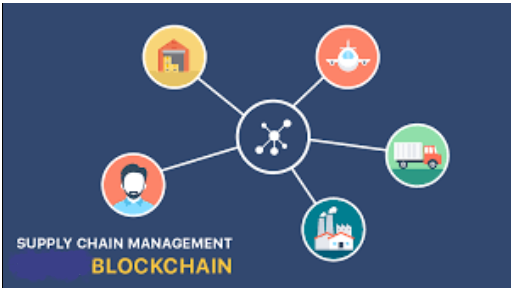Investing wisely matters greatly, and Benjamin Franklin’s words hold true: “An investment in knowledge pays the best interest.”
When it comes to your finances, understanding the connection between risk and return is essential, especially in 2023.
Beginners often ask, “Which investment type carries the least risk?” But a better question is, “Which investment type balances low risk with potential high returns?” Investments are crucial for financial growth. They allow your money to work for you, bringing you closer to financial freedom. While a 9-5 job won’t make you wealthy, smart investments can.
Recognize that all investments come with risk. Even selecting a bank for a savings account involves risk and return considerations. For instance, choosing Bank A with a 1% interest rate over Bank B with 3% means losing out on potential returns due to inflation.
In this blog, we’ll explore low-risk investment benefits and types, helping you find what suits you best. We’ll focus on a top answer to the risk-return dilemma: real estate.
Read More: Investment Strategy for Doctors: Securing Long-Term Financial Stability
Choosing Low-Risk Investments for a Strong Investment Portfolio
Congratulations if you’re just starting your investment journey! As a physician, investing is vital for financial freedom. Investing might feel overwhelming but don’t worry. Low-risk investments are a smart way to use your hard-earned money. They’re safe and steady, and we believe the best investment portfolios mix low-risk and high-risk options.
While you gain confidence for riskier investments with potentially higher returns, low-risk options offer unique benefits for physician investors. These benefits include safety and stability. To spot low-risk investments, look for:
- Options that protect your capital,
- Choices that offer consistent, though modest, returns,
- Opportunities with higher returns over a longer time.
Considering these factors, here are some top investment choices that balance risk and return effectively:
Types of Investments to Consider for 2023 Federal Income Tax Return
1. Savings Account: A Secure Choice
A savings account is a safe way to protect your money from inflation. It’s guaranteed by federal law and offers easy access to your funds with a debit or ATM card. You earn a fixed interest rate per year. In 2020, the best accounts offered a 1.10% to 1% annual percentage yield.
2. Fixed Deposits (FDs) or Certificates of Deposits (CDs): Balancing Risk and Return
Similar to savings accounts, CDs are offered by banks with a slightly different risk and return rate. They have higher interest rates but require you to keep your money in the account for a specific time, usually six months to five years. With CDs, the risk and return depend on the time period. Returns range from 0.85% to 0.35% for one-year CDs.
3. Bonds: Different Types, Different Risks
Government, corporate, and municipal bonds are the three main types. Government bonds are the safest, as you lend money to the federal government. Corporate bonds have higher returns but more risk tied to a company’s performance. Municipal bonds are issued locally and may be tax-exempt. The risk and return depend on bond type and maturity.
4. Mutual Funds: Long-Term Investing
Investing in Mutual Funds over ten years reduces the impact of market fluctuations. These funds invest in various assets like stocks, bonds, and debt. It’s like entrusting a company to manage your investments.
5. Fixed Annuities: Guaranteed Returns
Fixed Annuities provide a fixed, guaranteed risk and return. You start getting returns after a set date and can’t access your capital before the contract ends. Average annual returns range from 3.7% to 4%.
6. Real Estate Investments: Long-Term Potential
Real estate investments can carry lower risk based on research. Options include apartment complexes, Real Estate Investment Trusts (REITs), and Real Estate Syndications. Real estate offers consistent returns and is favored by millionaires.
In the upcoming sections, we’ll explore the benefits of real estate investing and proven methods to help grow your wealth.
Exploring the Stability of Real Estate Investments
Investing in real estate is a smart choice because its demand remains steady, no matter the current market conditions. This stability is due to the essential need for shelter. People buy homes for various reasons like job changes, family needs, or seeking a different living space. In 2019, the National Association of Realtors found that home prices increased slightly to a median of $257,000, with buyers typically purchasing homes for 98% of the asking price.
Read More: The Impact of New Tax Laws on US Physicians: An Overview
a. Growing Demand in Real Estate
The demand for real estate continues to be strong. In 2019, both new and existing home sales increased, along with construction activity. Lower mortgage rates improved homebuilder sentiment and led to a 12% increase in building permits for new housing units. Housing starts and completions also saw growth.
b. Positive Trends in Home Sales
Chief Economist Lawrence Yun from the National Association of Realtors (NAR) noted that falling interest rates are boosting home sales. Despite this, there is a shortage of lower-priced homes, causing an increase in home prices. Existing home sales, including single-family homes and condos, were up 2.5% in July 2019 compared to the previous year.
c. Commercial Real Estate as a Low-Risk Investment
Commercial real estate is another low-risk investment option. Even during the pandemic, commercial real estate transactions averaged $2.5 million in the second quarter of 2020. A study by CBRE Group Inc. in 2017 highlighted that tenants in commercial real estate opt for long leases to lock in prices, regardless of the market conditions.
Limited availability of suitable properties also leads tenants to enter into long leases for larger spaces.
Still unsure? Here are more reasons why real estate deserves your attention when picking an investment with minimal risk
- You have a say in real estate deals, allowing you to control the risk by choosing how to invest.
- Investing in real estate offers moderate to high returns with less effort on your part.
- Real estate investment involves buying property, which provides stability and safety
- As a real estate investor, you can benefit from various tax advantages.
- Diversify your income by stepping beyond clinic work through real estate ventures
- Real estate investments can match or surpass your physician income, leading to lasting financial freedom.
Read More: Tax Planning for Medical Professionals: Year-Round Strategies
Bottom Line
At E.R.P.S Group, we guide physician entrepreneurs in building wealth through commercial real estate and rental property investments. We support physicians in becoming real estate investors. We have extensive knowledge about the Who, What, Why, and How of this journey.
Stay connected with us by subscribing to our newsletter. It will update you on our latest real estate ventures, offer investment opportunities to physicians, and provide valuable insights.






